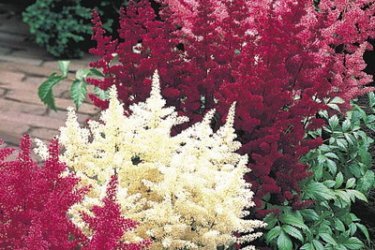Astilbe
The name of this herbaceous perennial plant translates as: Without shine. This does not imply the unsightliness of the flower itself, because Astilbe inflorescences bright: red, white, pink and even deep lilac, and matte leaves without shine.
North America, Japan and East Asia are considered its homeland; from these regions it was brought to Europe, and gained wide popularity when planting shady gardens, alleys, and flower beds.
The height of the bush can reach two meters, depending on the variety; today there are more than two hundred of them.
The most popular varieties among gardeners are:
- Chinese,
- Japanese,
- simple leaf,
- Arends.
It is not difficult to grow, the main thing is to remember some rules of care.
To make the plant delight you with bright inflorescences, plant it in the ground in May. It is advisable that the landing site be shaded.
Since Astilbe grows naturally along the banks of streams, it would be ideal to place it near pools, fountains, and artificial reservoirs.
If this is not possible, you should remember that watering the plant should be plentiful.
When growing Astilbe in open ground, in the summer it is advisable to water it twice a day, morning and evening, to avoid drying out of the rhizome.
In the fall, it is simply necessary to sprinkle the exposed part of the rhizome with soil so that the buds that appear again after flowering do not freeze in the winter, and they have something to eat.
How to propagate Astilbe
You can get new bushes by dividing the rhizome; it is better to do this in the autumn; for each division there should be at least one bud.
If you decide raise Astilbe from seeds - a very labor-intensive process awaits you and you will have to be patient:
- will need to withstand a certain temperature,
- carry out careful watering,
- and also carry out stratification.
It’s easier to order the variety you like from a specialized nursery.
Care
After the end of flowering, and it lasts from thirty to forty days, it is recommended to cut off the faded shoots of Astilbe so that they are flush with the soil and sprinkle with soil.
Growing Astilbe in the garden should be accompanied by fertilizing, preferably done in three stages:
- During spring hilling, add humus to the soil.
- June - dissolve two tablespoons of potassium nitrate in a bucket of water. Water Astilbe with this solution at the rate of 500 ml. For one plant bush.
- At the end of flowering, add 20 grams. superphosphate per bush.
If you follow these simple rules, the plant will delight you with the bright splendor of flowering.


